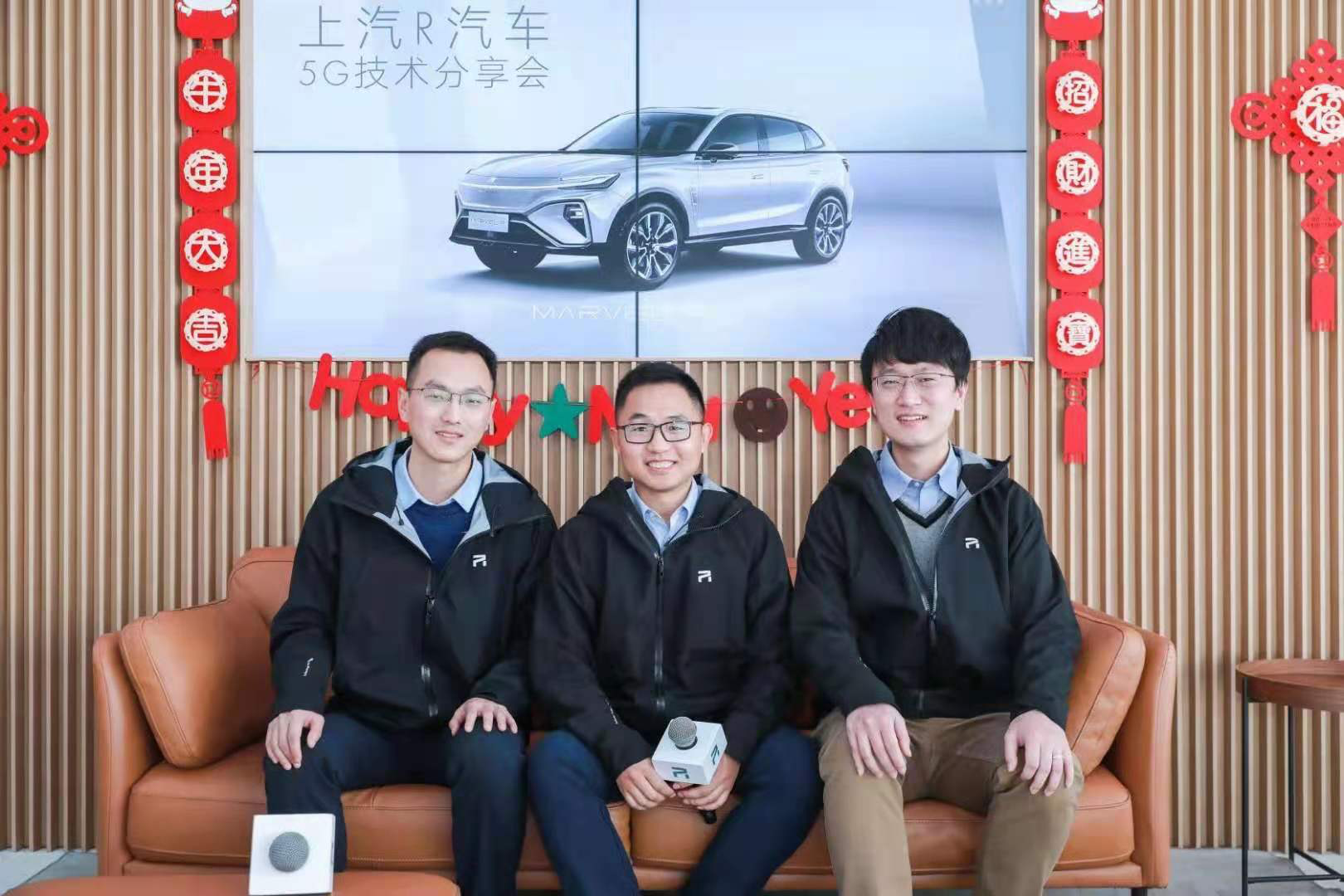In recent years, with the popularization of 5G, information transmission has become faster and has lower latency, and the concept of V2X has received more attention.
However, with the maturation of visual solutions and the upcoming mass production of lidar, what kind of improvements can V2X bring to the autonomous driving scene under the support of 5G is a question that I am very concerned about.
On January 14, 2021, I attended SAIC R-Brand’s 5G technology sharing session, where there were presentations by Mr. Zou Qingquan, senior manager of SAIC intelligent driving center and rotating director of 5GAA alliance, Mr. Wang Xiaoliang, senior manager of 5G-V2X function at SAIC intelligent driving center, and Mr. Min Liang, chief engineer of vehicle-road cooperative function at SAIC intelligent driving center. Below, I will review how SAIC engineers answered my questions.

Q: Currently, it seems that 5G is not very necessary in the era of autonomous driving. First of all, it involves the density of base stations. 5G base stations must be denser than 4G. How to solve this problem?
Also, Luminar’s lidar mass production plan is very detailed. They have announced that they can mass-produce a 300-line, 1550-nanometer lidar for only one thousand US dollars by 2022. I agree that V2V and V2P, V2N have value in the 5G era. But from the current technological context, single-vehicle intelligence in the field of autonomous driving is more important than vehicle-road cooperative V2X, especially V2I, which seems to have more extensive applications.
Because whether it is traffic lights or other scenarios, cameras can solve this problem, and lidar can also solve this problem. Why is 5G necessary? This requires a large investment of cost and time to invest in base station construction in a short period of time. And there are lower-cost and faster solutions to these problems today, so why should we invest more resources in this matter?
A: We believe that V2X is necessary and very important. 5G is a very important infrastructure for autonomous driving, smart transportation systems, and smart travel systems.
First, let’s talk about the base station issue, which I often encounter. If the vehicle has 5G technology, where can it be used without the base station? Indeed, to support high bandwidth and large connections, a lot of new base stations are needed.
Why did we choose C-V2X technology for the route at the time, rather than DSRC technology? It is because C-VX has a strong industrial ecology behind it.But for just one vertical application in the automotive industry, it’s not enough to convince operators to build base stations. However, the situation is different with the scenario of mobile phones and smart homes, which would lead to economies of scale and a viable commercial model. Therefore, I think the construction of base stations is a matter of time, and there is no need to worry too much.
Taking Shanghai as an example, base stations are built quickly and are basically covered within the inner ring road, and the coverage is also almost complete within the outer ring road. The expansion outside of the outer ring road is gradually being rolled out, and it will soon achieve full coverage of the entire Shanghai area.
Another point is the issue of intelligent bicycles versus connected vehicle intelligence. I believe that connected vehicle intelligence has advantages that cannot be replaced by intelligent bicycles.
Firstly, there is an advantage in perception range. Whether it is millimeter wave, LiDAR, or camera detection, they are all detection within line-of-sight range. Once there is an obstruction, obstacles cannot be detected, and the range of effect is within 300 meters.
V2X does not have this limitation and can bypass obstacles. The detection distance is also longer, reaching up to 500 meters.
Another advantage is that V2X can support active interaction. LiDAR is active detection, but the two parties cannot interact. However, V2X supports interaction between two or more parties, and different entities can negotiate in a reliable way in milliseconds. This is a very important area where V2X can bring huge possibilities and makes scenarios such as fish group control in multi-agent collaborative scenes possible.
Another issue that you mentioned is traffic signal recognition. Currently, relying solely on vision cannot meet the demands for scenario adaptability and detection accuracy. This is also why Tesla has not yet launched traffic signal recognition functionality.
However, V2X can achieve 100 % detection accuracy and information is richer. I do not believe that intelligent bicycles and collaborative intelligence are conflicting, and LiDAR and V2X will coexist and complement each other.
Q: The importance of the V2V and V2P scenarios in 5G automated driving applications is certain. However, the importance of V2I information transmission is decreasing because LiDAR cannot solve V2V and V2P information transmission issues.
However, in the V2I scenario, LiDAR can replace a large part of it, which is what I’m concerned about. Currently, in terms of V2I, what other LiDAR-related scenarios do you plan to expand on beyond what LiDAR cannot solve?
A: The vision for 5G is ubiquitous connectivity, but not every device has the ability to achieve this, and we have not reached that stage yet. However, we can think of a scenario where if an object fell in front of the vehicle, such as a cardboard box or an obstacle on the road, it could be detected and perceived very well with LiDAR or visual sensors.But there are still blind spot issues when detecting with lidar or vision, as mentioned before, and there are also some long-tail problems. If these object themselves have communication capabilities, the situation will be much better, which can greatly improve the accuracy and reliability of detection.
In a broader scope, we can now design scenarios for the Internet of Everything, including the connection between cars and smart homes, smart security, and the objects in smart city and intelligent transportation. These scenarios are foreseeable, and this is the convenience brought by 5G. Our cars are capable of this, and when the interactive objects also have this capability, these functions can be utilized.
In fact, through this communication, I found that the application of 5G technology on vehicles can not only solve the problem of autonomous driving, but also have the opportunity to penetrate into life and work scenarios in the future.
All of this still needs some time to land, but 5G brings us a much greater imagination space for the future. I think this waiting is worth it.
This article is a translation by ChatGPT of a Chinese report from 42HOW. If you have any questions about it, please email bd@42how.com.
